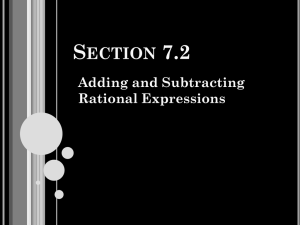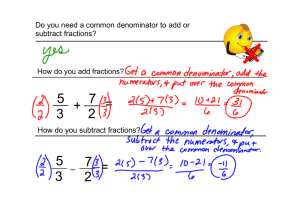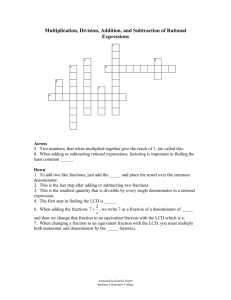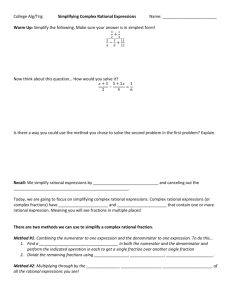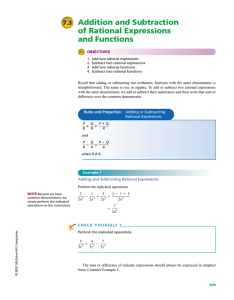Adding and Subtracting Rational Expressions
advertisement
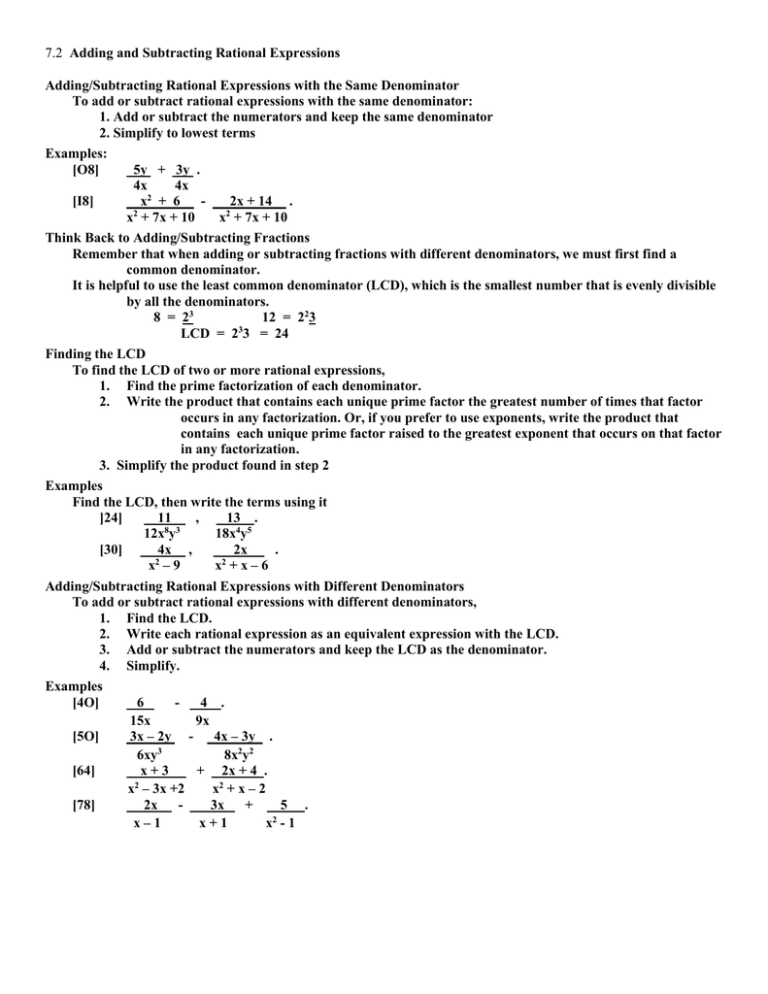
7.2 Adding and Subtracting Rational Expressions Adding/Subtracting Rational Expressions with the Same Denominator To add or subtract rational expressions with the same denominator: 1. Add or subtract the numerators and keep the same denominator 2. Simplify to lowest terms Examples: [O8] 5y + 3y . 4x 4x 2 [I8] x + 6 - _ 2x + 14 . x2 + 7x + 10 x2 + 7x + 10 Think Back to Adding/Subtracting Fractions Remember that when adding or subtracting fractions with different denominators, we must first find a common denominator. It is helpful to use the least common denominator (LCD), which is the smallest number that is evenly divisible by all the denominators. 8 = 23 12 = 223 3 LCD = 2 3 = 24 Finding the LCD To find the LCD of two or more rational expressions, 1. Find the prime factorization of each denominator. 2. Write the product that contains each unique prime factor the greatest number of times that factor occurs in any factorization. Or, if you prefer to use exponents, write the product that contains each unique prime factor raised to the greatest exponent that occurs on that factor in any factorization. 3. Simplify the product found in step 2 Examples Find the LCD, then write the terms using it ]24] 11 , 13 . 12x8y3 18x4y5 [30] 4x , 2x . x2 – 9 x2 + x – 6 Adding/Subtracting Rational Expressions with Different Denominators To add or subtract rational expressions with different denominators, 1. Find the LCD. 2. Write each rational expression as an equivalent expression with the LCD. 3. Add or subtract the numerators and keep the LCD as the denominator. 4. Simplify. Examples [4O] [5O] [64] [78] 6 4 . 15x 9x 3x – 2y - 4x – 3y . 6xy3 8x2y2 x+3 + 2x + 4 . 2 x – 3x +2 x2 + x – 2 2x 3x + 5 . x–1 x+1 x2 - 1
